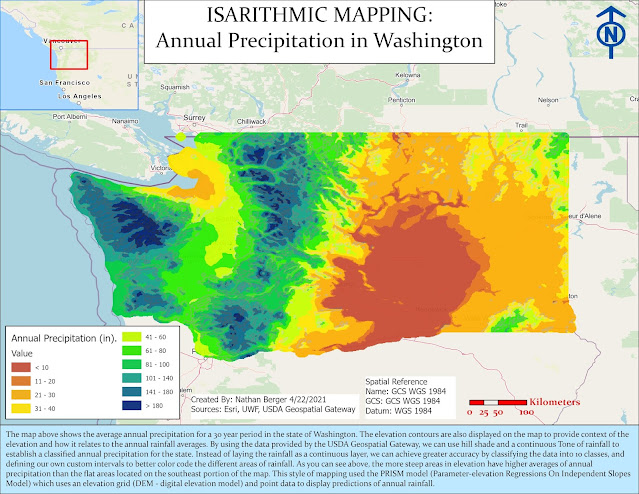GIS Analysis of Tiger Road Networks In Jackson County, Oregon
Tiger 2000 Roads VS. Centerlines Roads
So, why is the Tiger Roads dataset above at 11,382.7 KM and the Center Street lines dataset at 10,805.8 KM? There are significantly more road networks for the Tiger roads dataset than the centerlines.
But we just did that the Tiger Roads 2000 dataset is almost impossible to use for mapping positionally accurate road networks due to the consistency of errors? The answer to that is the Tiger Roads dataset we are using from 2000 is larger indicating that there are more roads than the street centerlines.
As far as judging which one is more complete, that would be the dataset with
more roads / more data (Tiger Roads 2000, not the Street centerlines). The Tiger Roads contains over 11,000 km of road length, and the centerlines is around 10,800 km in length. Tiger 2000 s more complete when deciding on which geographic road network has more data.
Centerlines Road Length Per Cell
We need to count the
number of roads in each grid, for Tiger and Street Centerlines. But we need to
also count the “length of roads” for each dataset within each grid. This is the
main task here.
I decided to run the split tool of each road network based on the grids and grid cell id’s. After this was completed, I merged tiger roads and centerlines back into one file, looking at the total road count as much higher than before.
I summarized
within each polygon (grid cell) the roads of both Tiger and Centerlines
datasets. I then created a new field for both of my summarize within outputs
called grid length. I re-calculated the length of the roads in kilometers for
these roads in each grid cell. I then renamed some of the fields to make sure I
would not get confused on the spatial join.
Results:
Total grids in which
Tiger is more complete: 167 (56% of total grids)
Total grids in which
Centerlines are more complete: 130 (44% of total grids)
Road Length total of
tiger Roads: 11,030.1 KM
Road Length total of Centerlines Roads: 10,671.2 KM
According to an article (Haklay, M. 2010. How good is volunteered geographical information? A comparative study of OpenStreetMap and Ordnance Survey datasets) Haklay mentions (2010, pg. 685) how to evaluate geographical information and quotes another GIS researcher, Van Oort’ (2006) synthesis on some aspects on doing this. Van Oort mentions completeness and positional accuracy among many other aspects of evaluating geographic data.
The results above demonstrate the completeness of Tiger Roads versus centerlines for Jackson County, Oregon. In doing so, we can judge the positional accuracy of these roads in how they fall onto imagery or compare to one another. But the completeness is the most important aspect of this lab because we want to determine which dataset has the most updated road network, by calculating the road lengths in kilometers for every grid cell in the county.
Percent Change Formula:
According to research on Tiger Roads for positional accuracy, Tiger roads 2000 were essentially filled with positional accuracy errors, as TIGER Roads 2000 data was meant to be more of a “topological data structure” or rather it was meant to display roads, but not necessarily position their correct location on a map (Zandbergen, P.A., D.A. Ignizio and K.E. Lenzer. 2011.
Positional Accuracy of TIGER 2000 and 2009 Road Networks). Zandbergen et al. (2000, p. 498) visually describes the consistency of positional errors for Tiger roads 2000 with intersections not having a lot of reference point data, in which vertices were lacking and coordinates were not in the correct location which could be verified with extremely accurate and high resolution imagery of these road intersections.
However, the Tiger Roads
datasets of 2009 is far more accurate than the 2000 data according to
Zandbergen et al. (2000, p. 515). After running 3 test cases on Tiger Road network
data of 2000, 2009, and comparing this data to the local street centerlines
network, the results were able to determine that the Tiger roads of 2009 are
far more accurate in regard to positional accuracy. The errors do not follow a
normal distribution like they did for the 2000 dataset, and the errors are not
as significant tin regards to horizontal positioning of coordinates for the
vertices of road intersections.











Comments
Post a Comment